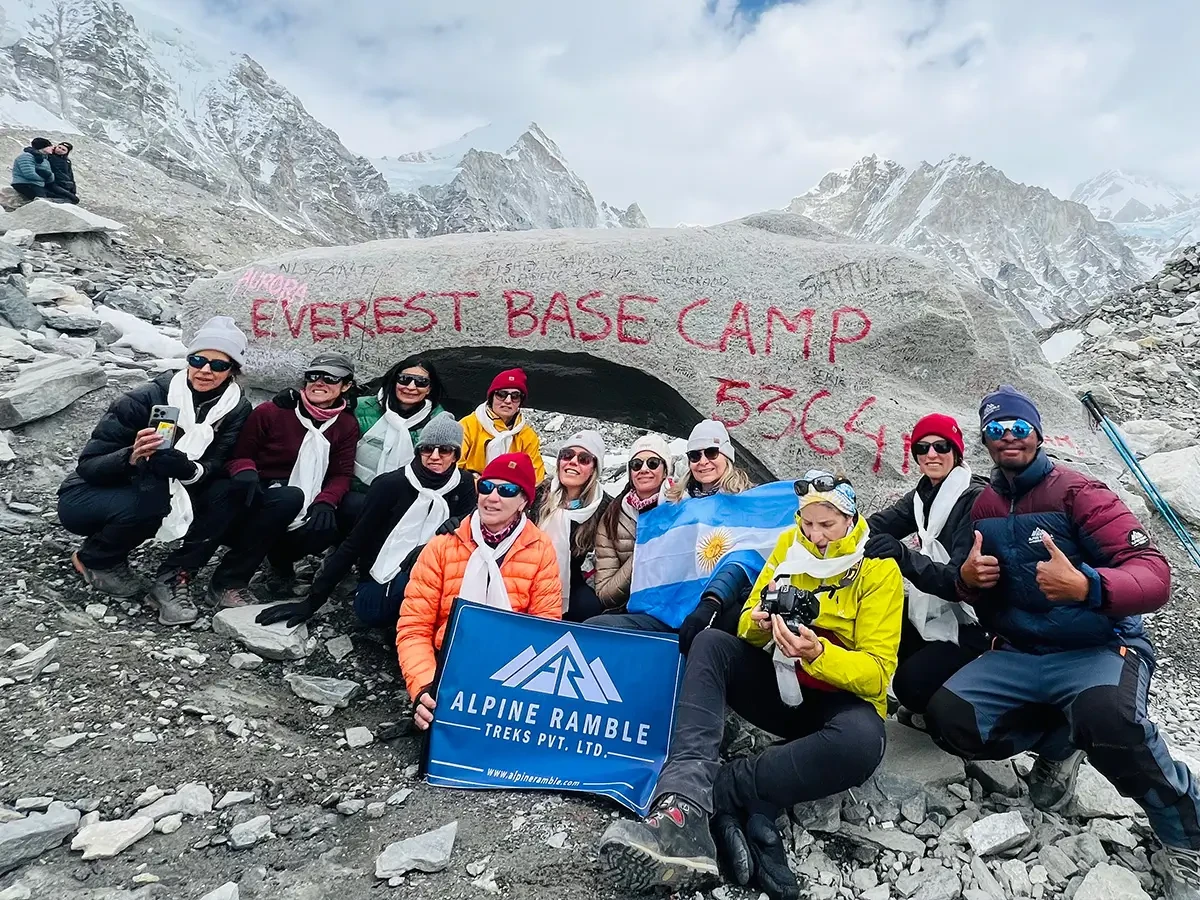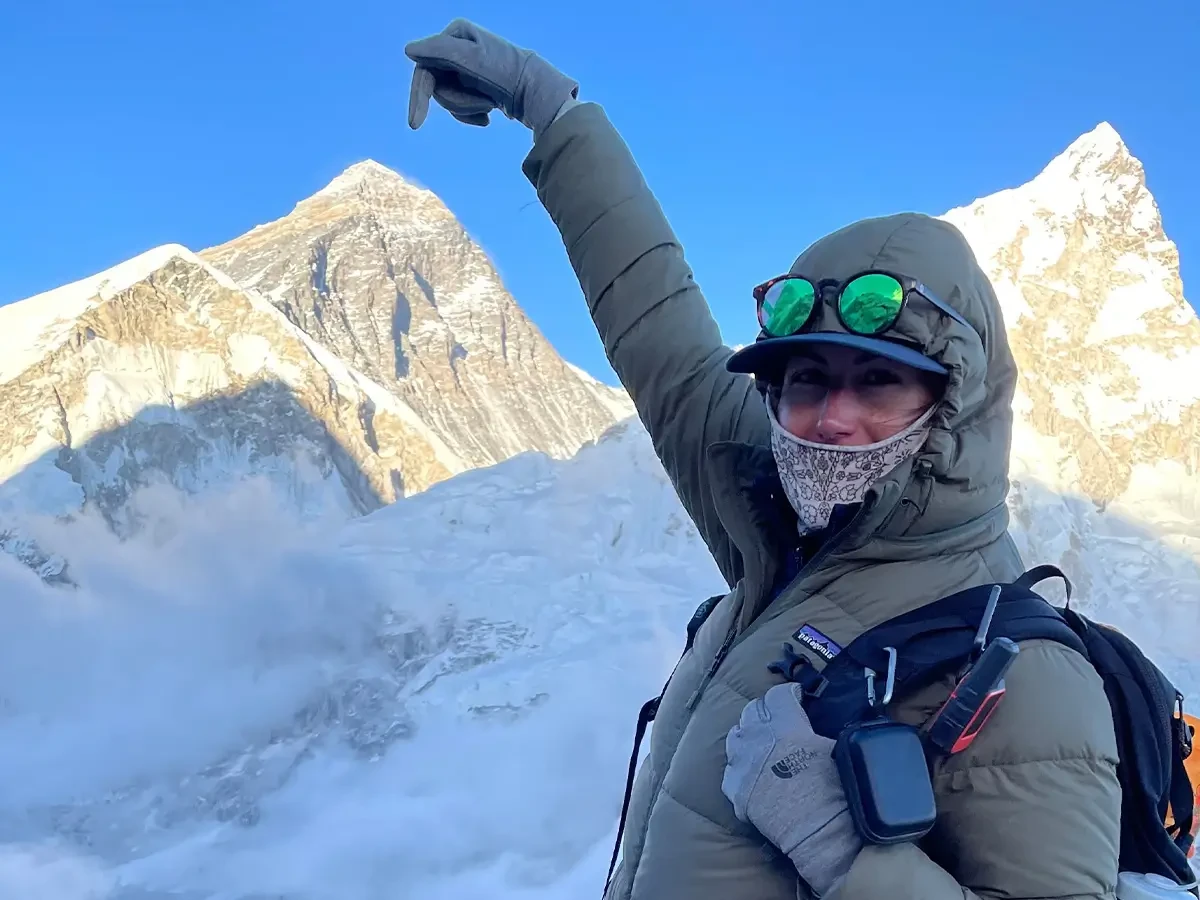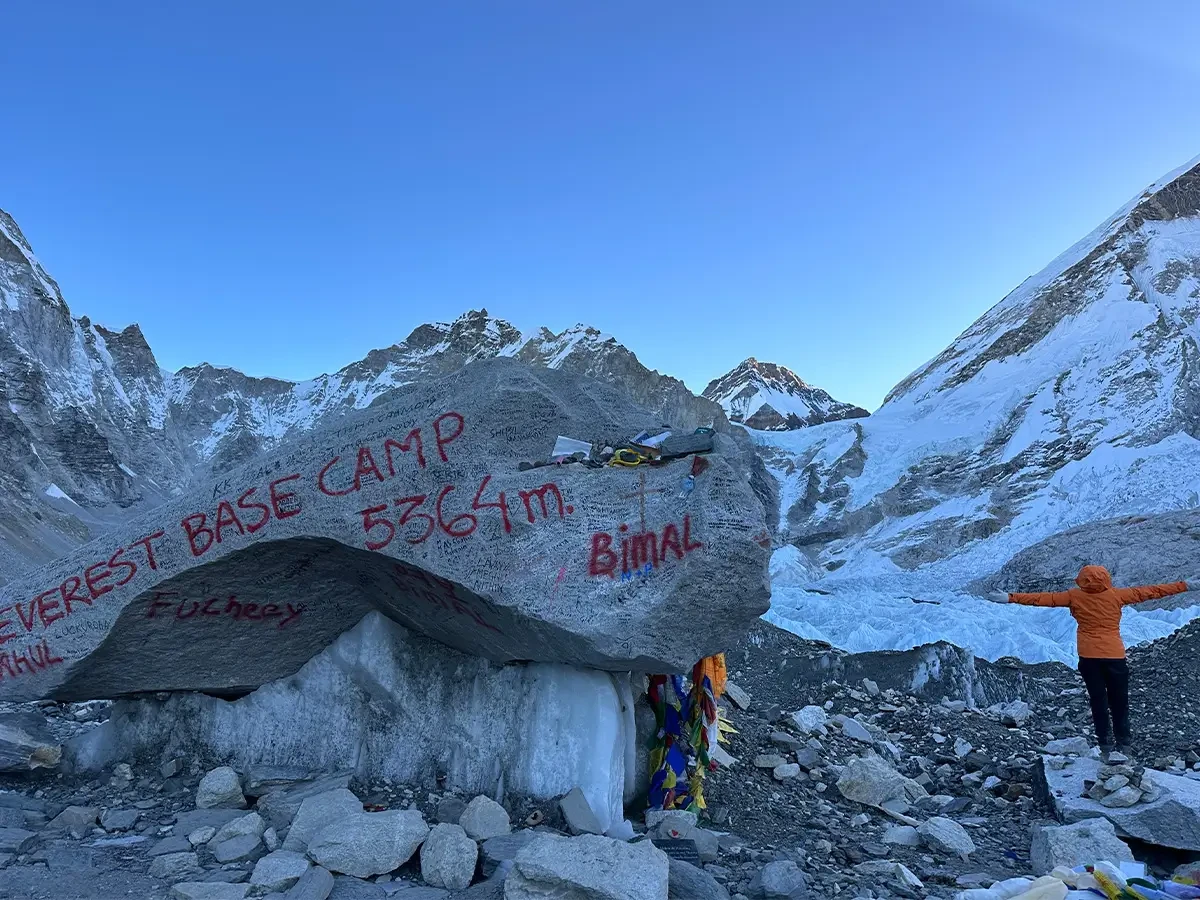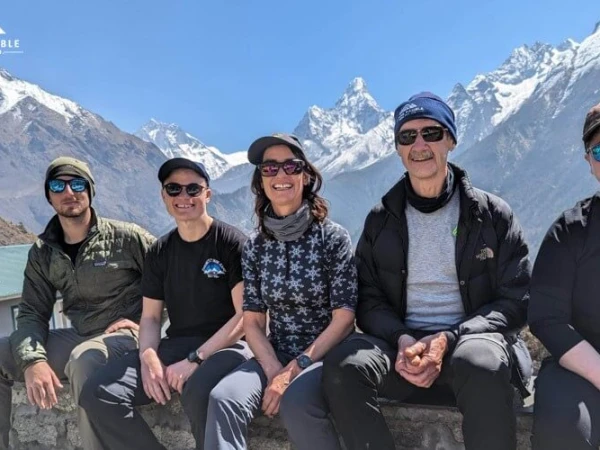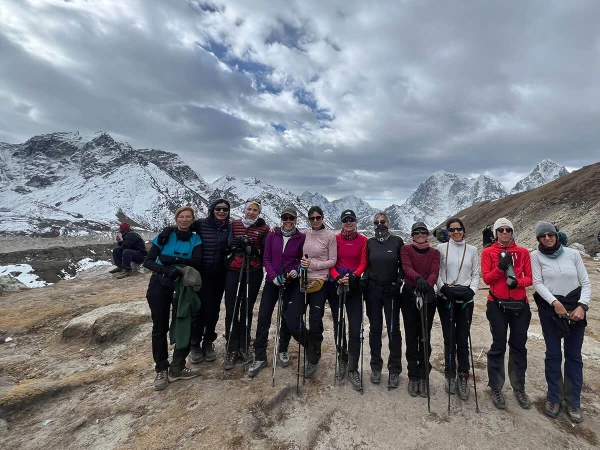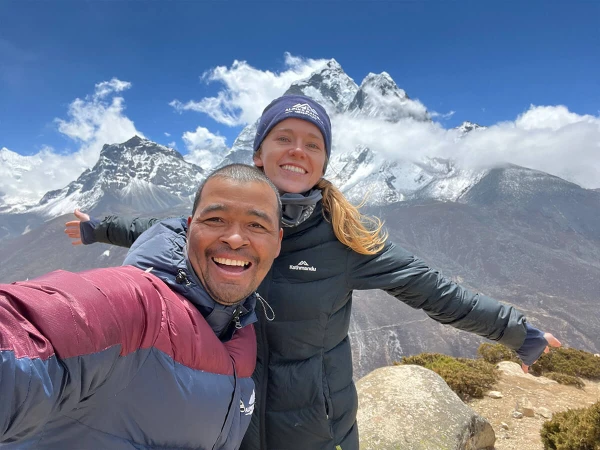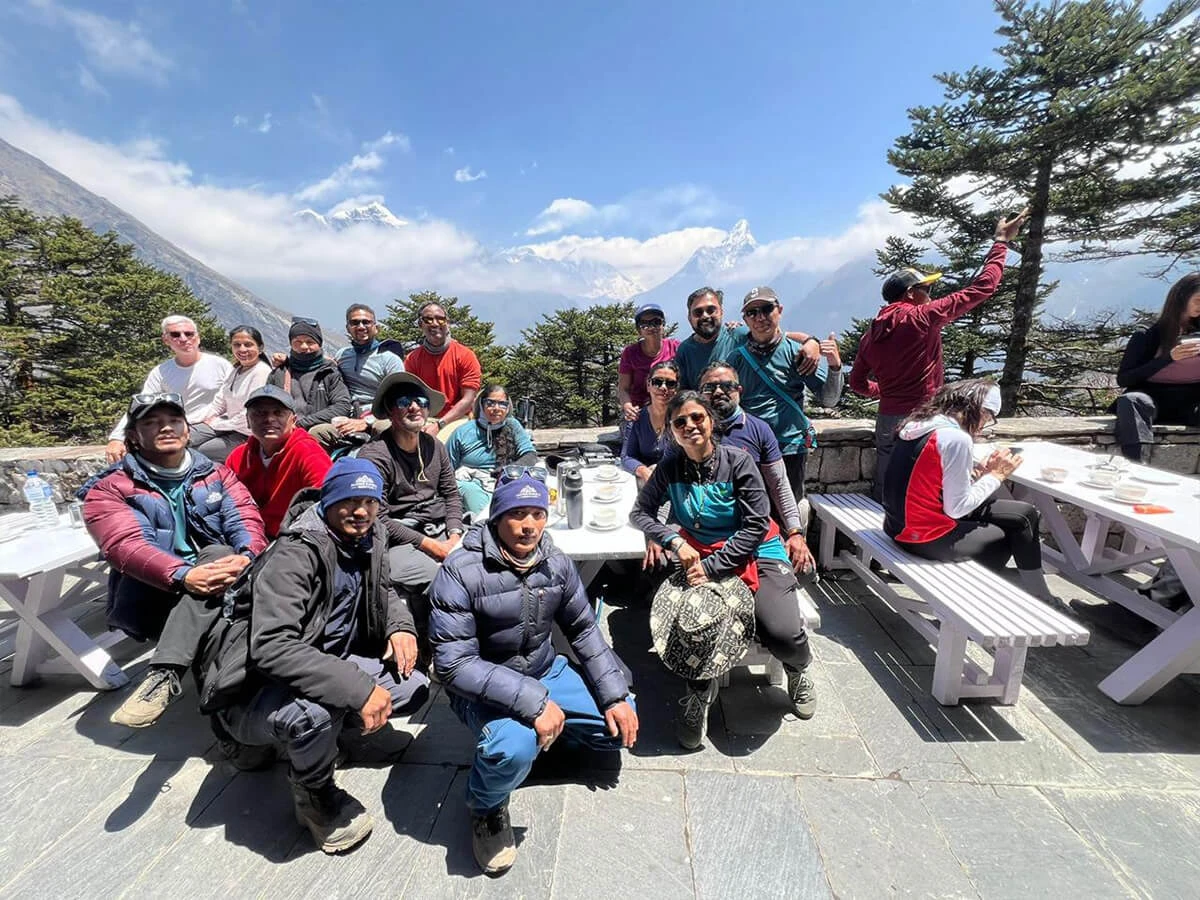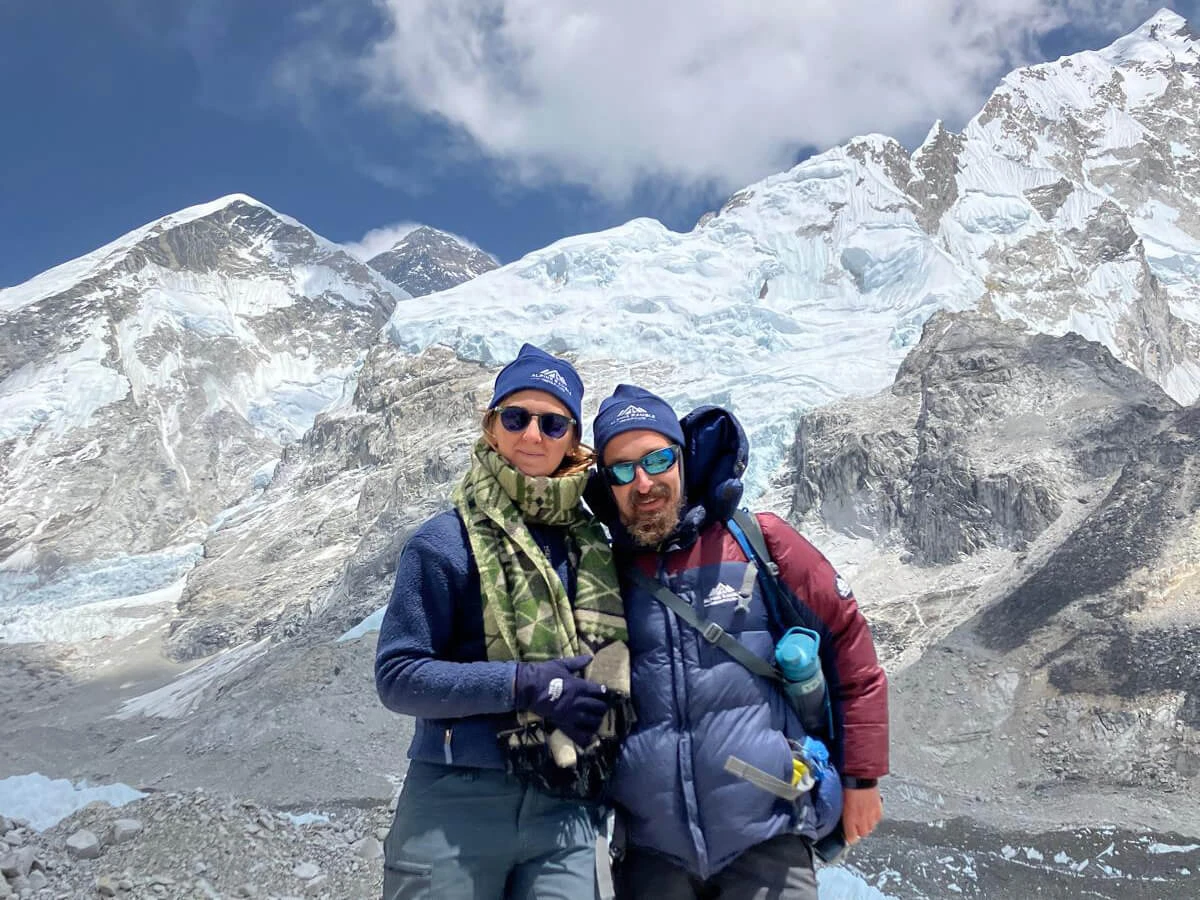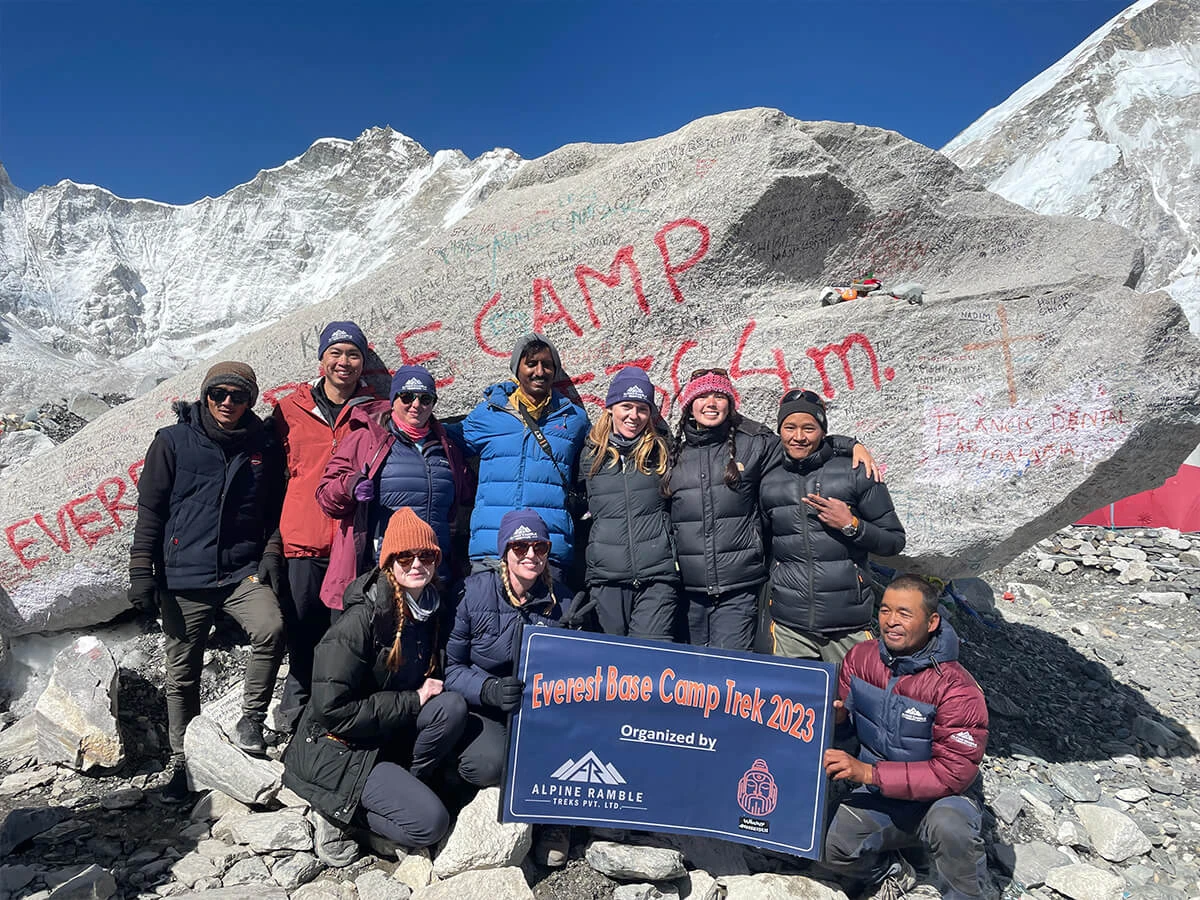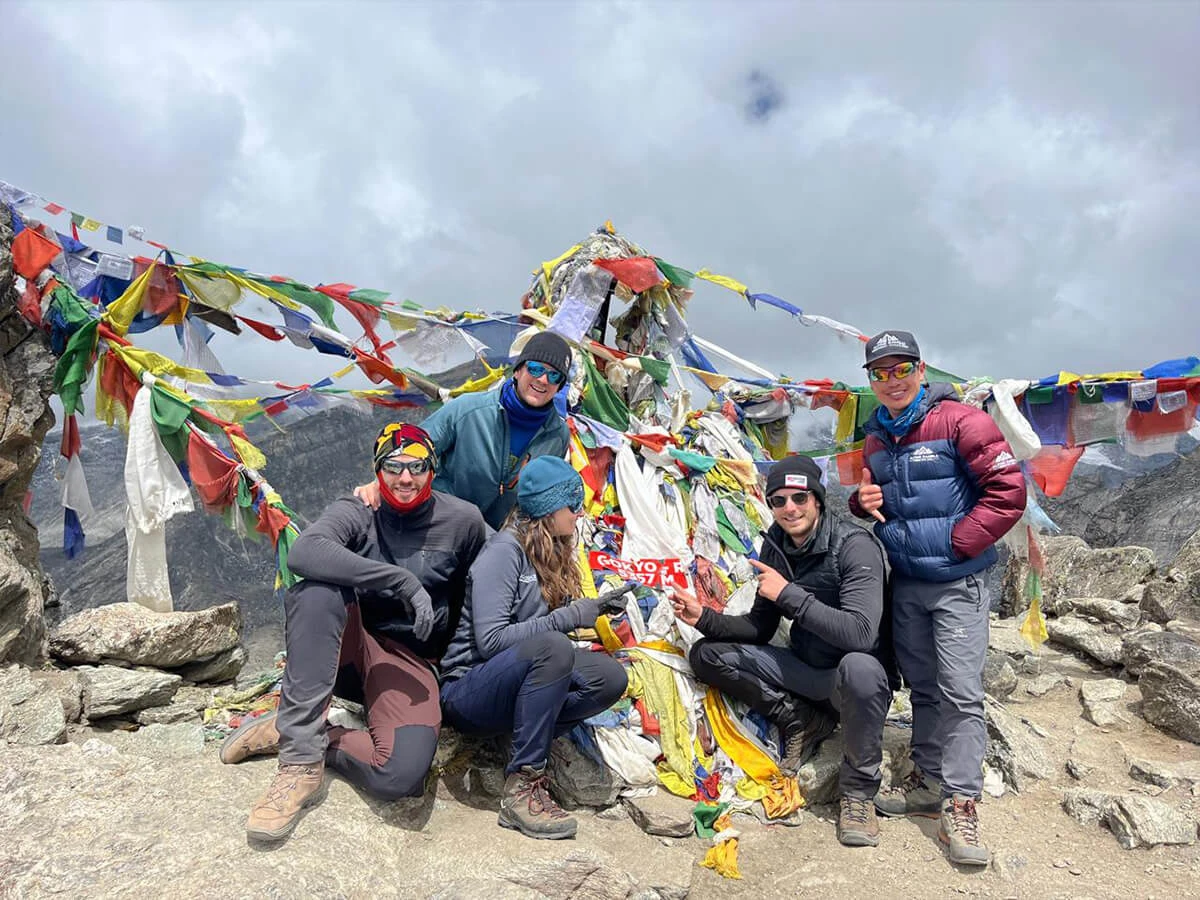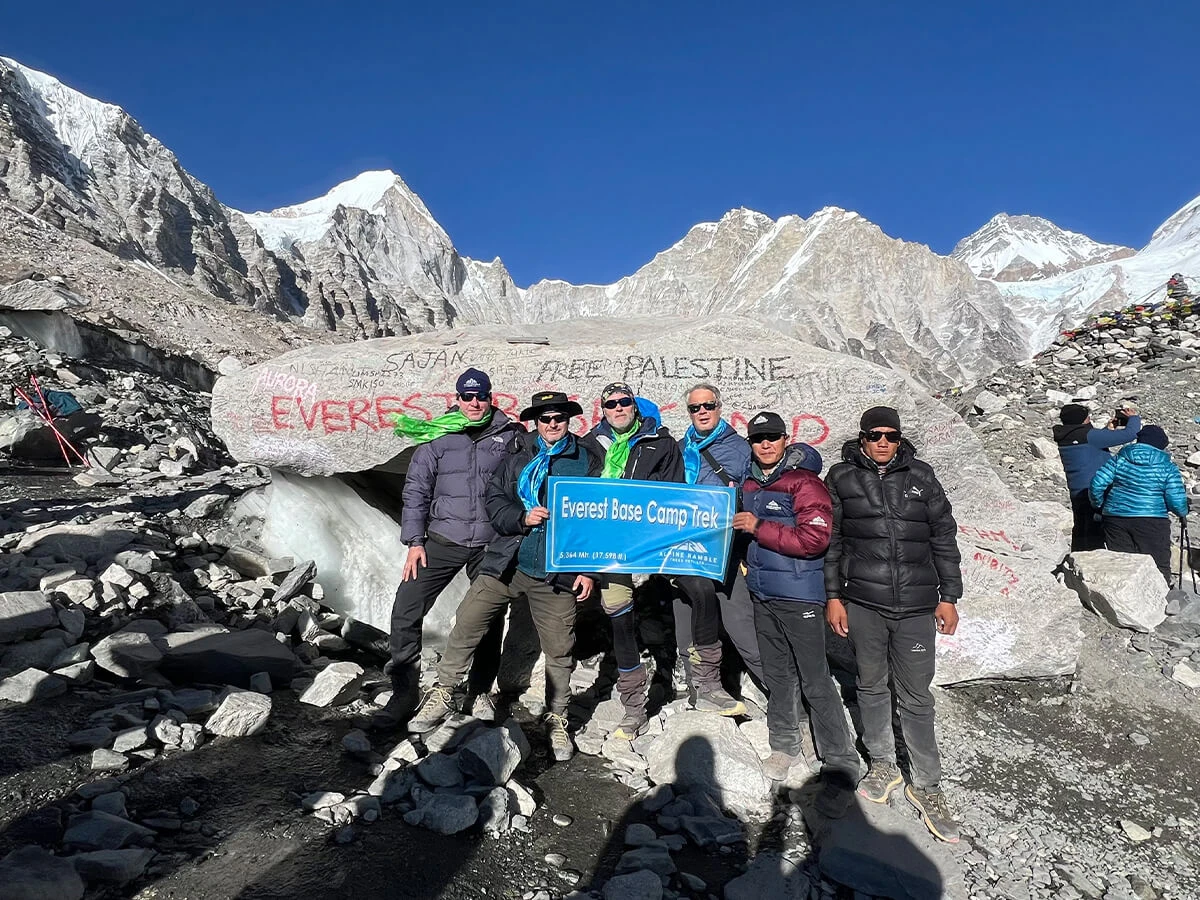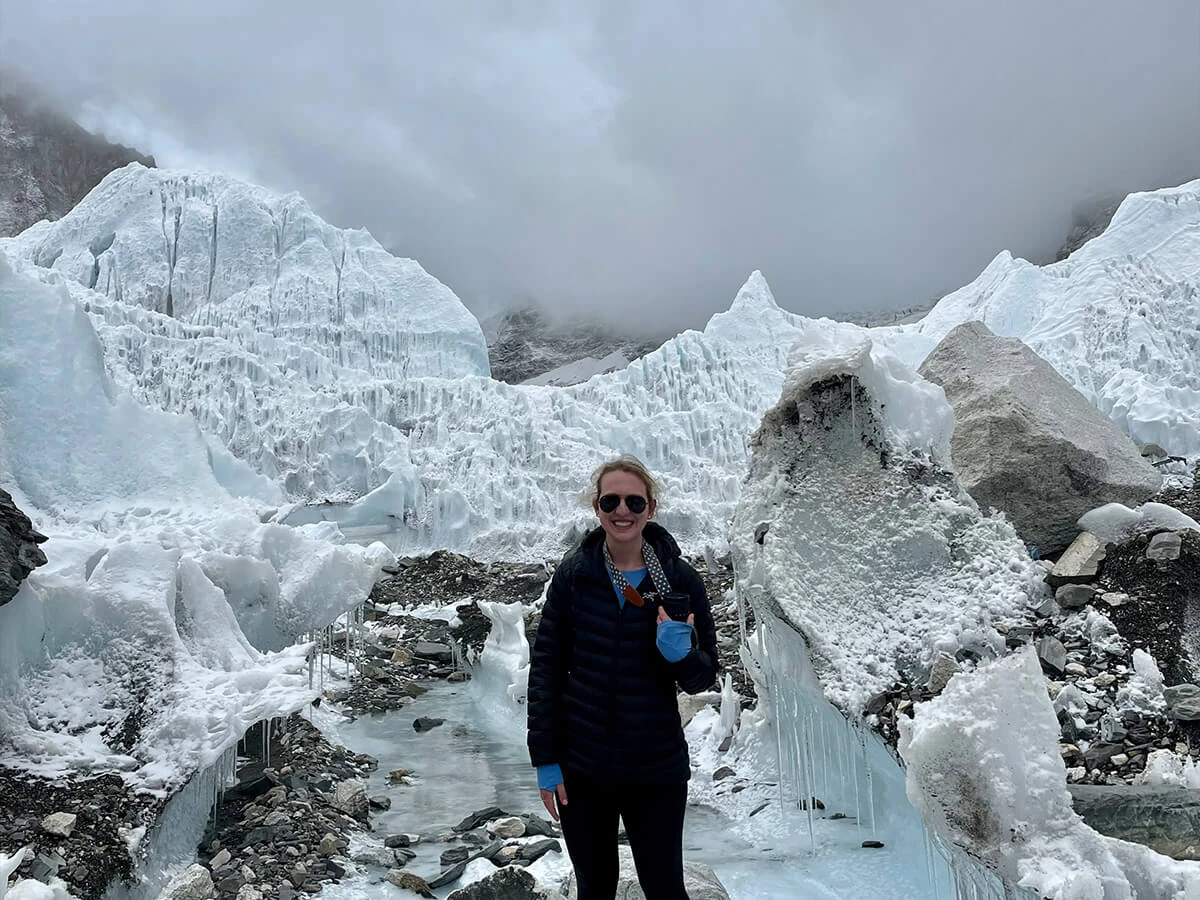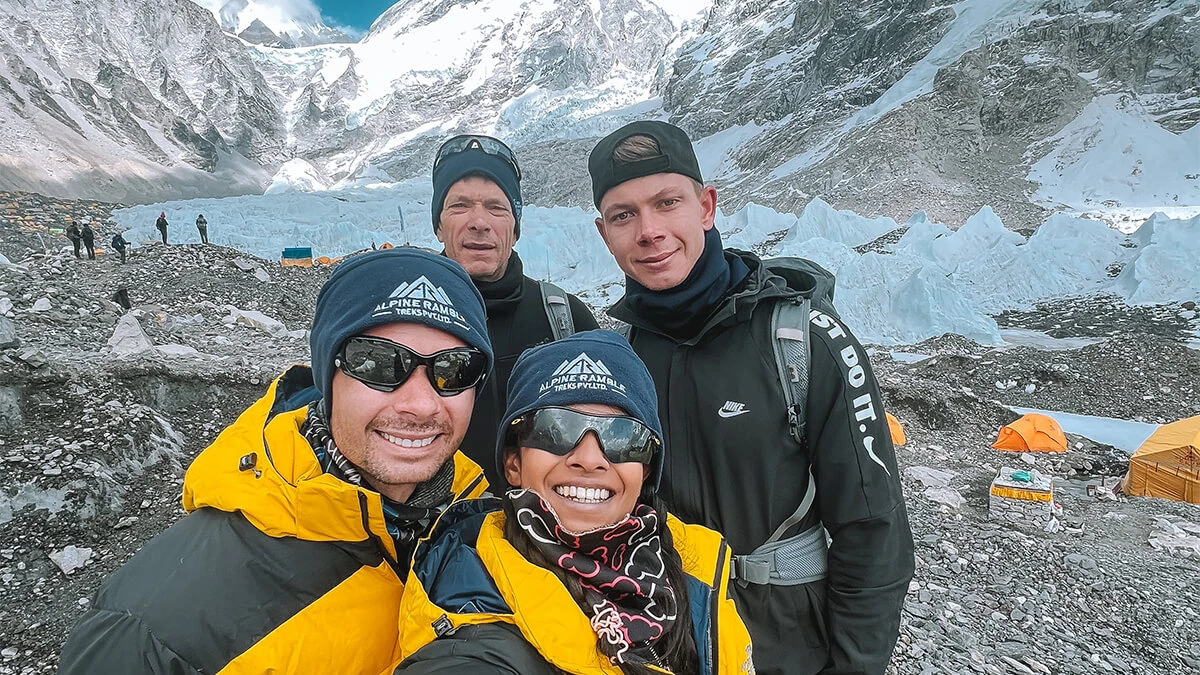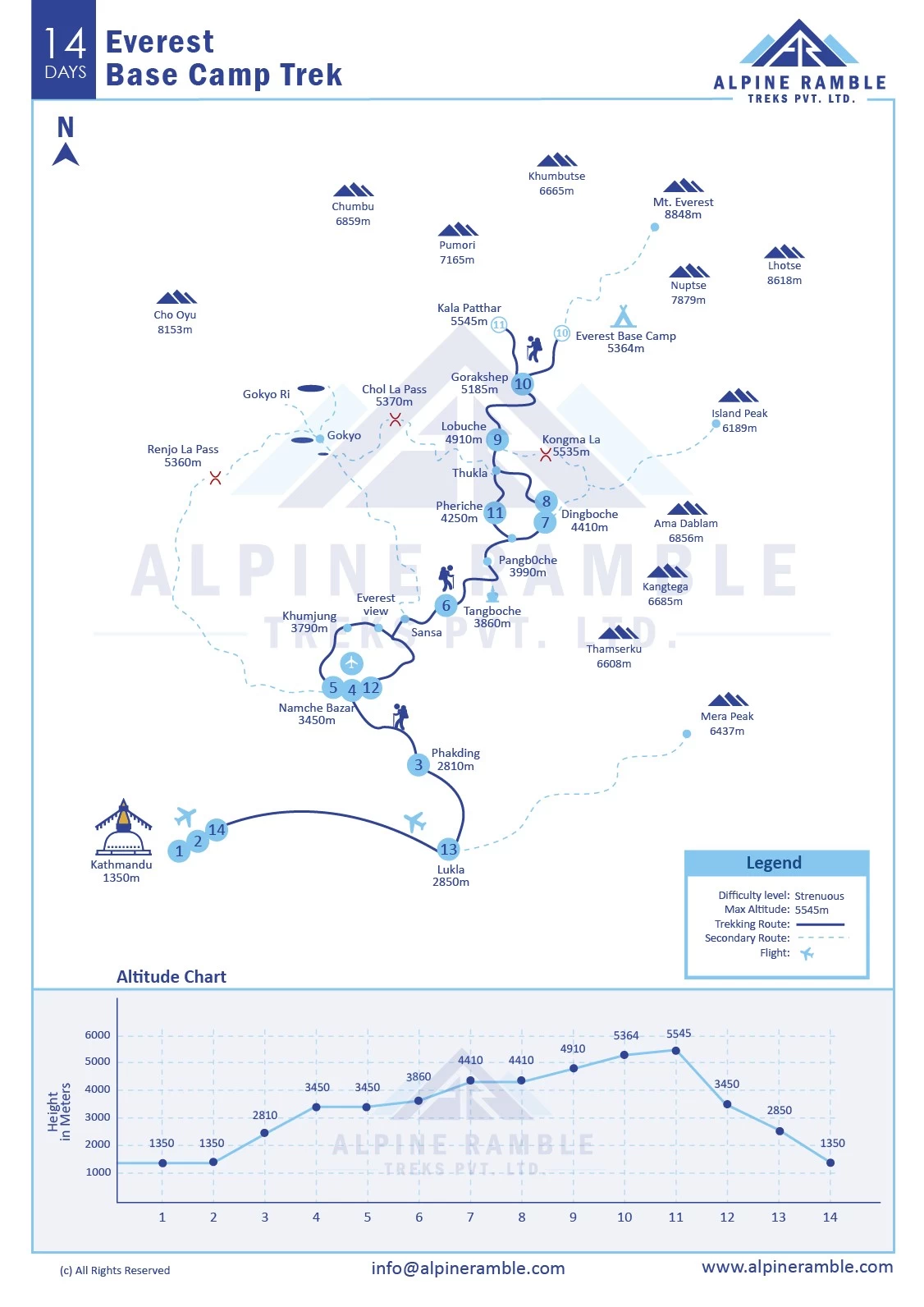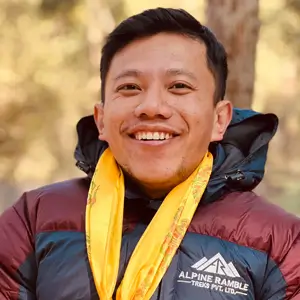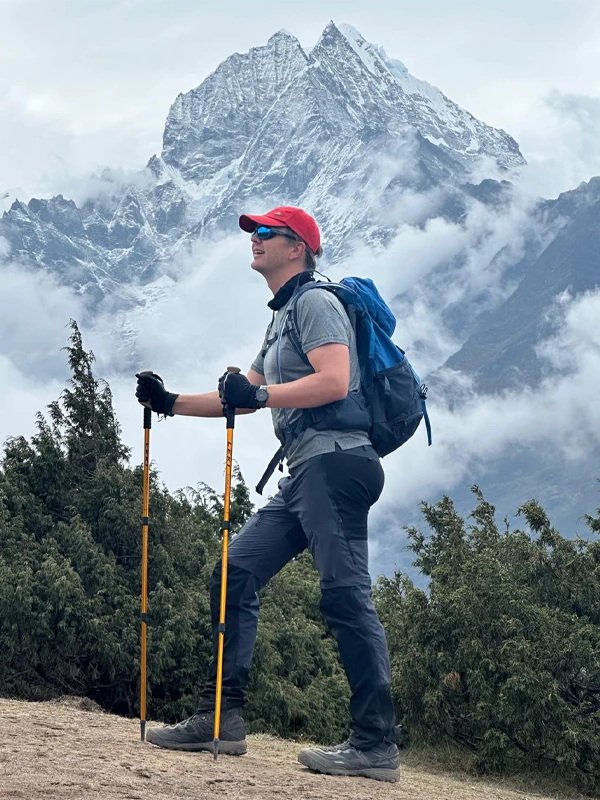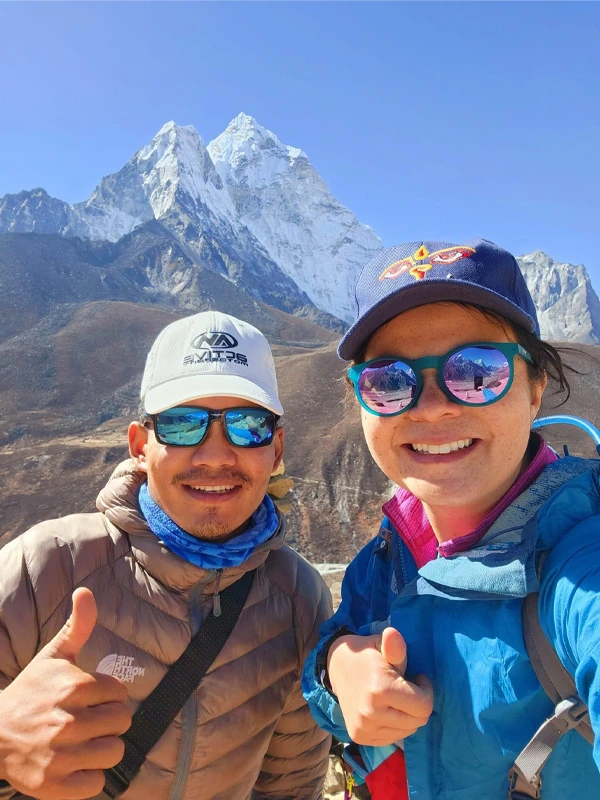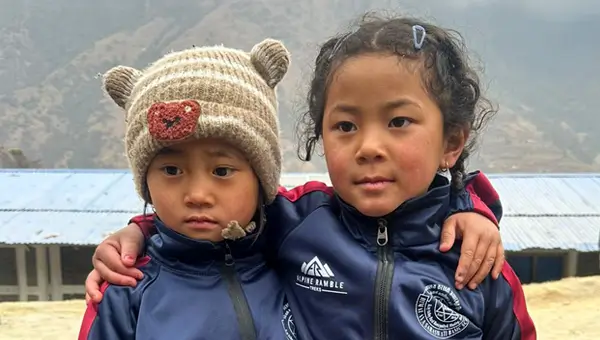If Everest Base Camp is on your list, this 12-day route is the time-smart way to live the experience without trimming the soul of the journey.
You still stand at Everest Base Camp (5,364 m), still climb Kala Patthar (5,545 m) at sunrise, still step into the world of prayer flags, monasteries, and Sherpa hospitality, just with an itinerary that respects modern schedules. Think of it as the “long weekend” version of a great novel: all the vital chapters, none of the filler.
Alpine Ramble has spent 15+ years building a reputation as a trusted trekking company in Nepal, led by local guides in Nepal who grew up on these trails.
With 15,000+ trekkers guided and a 100% completion record, our approach blends meticulous safety with human warmth. We keep the acclimatization days that matter, simplify logistics, and put a Sherpa-born professional at your side, not just to lead, but to translate the region’s living culture.
Every year, around 40,000 trekkers attempt EBC. They’re not all elite athletes.
They’re parents with kids, retirees treating themselves, first-timers with curiosity and grit, and couples stealing time from busy lives. If you can walk 5–7 hours most days at sea level with a daypack, the 12-day Everest Base Camp trek is within reach.
And when you look back at the calendar of your life, these twelve days will feel like a thank-you gift to your future self.
Highlights
Why This 12 Days EBC Trek Stands Out
-
The Lukla Flight: Short, spectacular, and storied. An alpine gateway at 2,860 m with a 527 m runway built in the 1960s under Hillary’s guidance.
-
Namche Bazaar (3,445 m): The Sherpa capital: cafés, museums, mountain outfitters, and the world’s highest “Irish pub.”
-
Sagarmatha National Park: UNESCO-listed since 1979, home to rhododendron forests, high-alpine valleys, and the Khumbu Glacier.
-
Hillary Suspension Bridge: A prayer-flag-draped icon over the Dudh Koshi River, equal parts thrill and poetry.
-
Sherpa Culture, For Real: Khumjung’s monastery (with the famous “Yeti relic”), Hillary School (est. 1961), yak pastures, and teahouse evenings.
-
Tengboche Monastery: Founded in 1916, the spiritual heart of Khumbu, set beneath Ama Dablam (6,812 m).
-
Everest Base Camp: Legendary launchpad at 5,364 m, a tented city in spring climbing season.
-
Kala Patthar Sunrise: The fabled 360° view of Everest, Lhotse, Nuptse, and Pumori at 5,545 m.
Could This Be Your Everest Story?
For many Western travelers, this trek connects the familiar with the extraordinary. Imagine the buzz of a Red Rocks sunrise or a sunrise over the Grand Canyon
Now layer it with Buddhist chants in a 100-year-old monastery, yak bells on a wind-scoured trail, and a view of Everest glowing gold at dawn. That’s the emotional grammar of the Khumbu.
We’ve guided families with kids who treat suspension bridges like playgrounds, seniors who gift themselves a milestone birthday at 5,364 m, private couples who choose a slower rhythm and more silence, small groups who arrive as strangers and leave as mountain family. The itinerary is short, yes, but it never feels rushed.
The pacing, acclimatization, and Sherpa leadership make the difference between just finishing and finishing with joy.
Is the Short Everest Base Camp Trek Within Your Reach?
Short answer: Yes
With honest preparation and good guidance. You don’t need to be a mountaineer. You’ll walk 8–15 km most days (5–9 miles) with gradual altitude gain and two built-in acclimatization days. Our local guides in Nepal are trained to adjust pace, watch for symptoms, and make simple choices—an extra tea stop here, a slower climb there, that protect your comfort.
We keep the focus on steady progress, not speed.
For training, think: brisk walks, hills or stair sessions, and light strength work. If you can hike 5–7 hours at home on weekends, you’re already close. What we add is seasoned pacing, cultural context, logistics mastery, and a team you’ll be proud to support
A trekking company in Nepal that invests in guides, porters, and community projects.
Choosing the Best Season for Your Everest Journey
Spring (Mar–May): Blooms and base-camp energy. Rhododendrons color the lower trail like Washington D.C.’s cherry blossoms, while climbers stage the world’s highest “city” at Base Camp. Book early—flights and teahouses fill.
Autumn (Sep–Nov): Classic trekking weather, crisp mornings, and clear afternoons. After the summer rains, the air feels polished. It’s also festival season, expect prayer flags and music in the villages.
Winter (Dec–Feb): Quiet, cold, profound. The light is diamond-clear. If you like ski towns in January for their calm and clarity, you’ll love winter EBC. Proper gear and a taste for solitude required.
Summer/Monsoon (Jun–Aug): Green valleys, waterfalls, and fewer trekkers. The trade-off is moisture and flight flexibility. Think of it as “Scotland in July” with Himalayan drama.
Beyond weather, seasons shape the feel: tea-house menus, trail crowding, and the probability of Lukla flight delays. We’ll align your Everest Base Camp trek 12 days with the experience you want, not just the month you pick.
What’s Included (and Why That Matters)
Prices vary across operators because “inclusions” vary. With Alpine Ramble, your EBC trek cost 2025/2026 clearly covers what matters:
-
Permits: TIMS (USD 20), Sagarmatha National Park (USD 30), Pasang Lhamu Municipality (USD 20).
-
Domestic flights & transfers (incl. Ramechhap logistics in peak months).
-
Accommodation in vetted teahouses (clean rooms, reliable kitchens).
-
Three meals daily on trek—nutritious, simple, predictable.
-
Licensed Sherpa guide & porter support (insured, fairly paid).
-
Complimentary gear on request: down jacket, sleeping bag, trekking poles, duffel.
-
Pre-trip briefing and airport pick-up/drop-off.
Extras to budget: Wi-Fi (USD 5–10/session), hot showers (USD 3–5), battery charging (USD 3–5), personal snacks, and beverages. Most trekkers spend USD 25–30/day beyond the package for these conveniences.
Your Next Step: From Dream to Departure
Peak season space (flights and teahouse rooms) books out months ahead. Most travelers secure places 3–6 months before departure; winter travelers often enjoy last-minute flexibility and off-season discounts (10% in Jan–Feb).
Whether you want a quick call with a local guide in Nepal or you’re ready to place a deposit, our team makes the process easy and personal.
Seasonal Everest Trek Offers & Smart Savings
-
Winter Offer (Jan–Feb): 10% off the Everest Base Camp trek 12 days package. Fewer crowds, crystal views, and a surprising sense of calm.
-
Student Groups: 10% discount year-round for verified student groups.
-
Complimentary gear rental: save up to USD 300–500 compared to buying abroad.
-
Family & Private Rates: custom pricing for private guides, extra acclimatization, or heli return add-ons.
Trekking in Nepal Permits: Simple, Included, Sorted
To protect both the ecosystem and communities, all trekkers need permits. We handle everything:
-
TIMS (Trekker’s Information Management System): USD 20
-
Sagarmatha National Park: USD 30
-
Pasang Lhamu Rural Municipality Fee: USD 20
That’s USD 70 total—processed before you land, ready when you arrive.
Comfort, Safety & Useful Extras
-
Sherpa Guide (included): Licensed, insured, and born to these trails.
-
Porter Service (optional): Typically up to 18–25 kg per porter (shared across 2 trekkers). Trek lighter; enjoy more.
-
Emergency Oxygen: Available at select lodges (e.g., Gorak Shep) if needed.
-
Horse Hire (rarely needed): Possible on select sections (availability varies; estimate USD ~100/day).
-
Health Posts: Lukla, Namche, Pheriche (HRA seasonal clinic), Dingboche, and Gorak Shep have varying services.
Daily Costs & Complimentary Savings
Expect USD 25–30/day for Wi-Fi, hot showers, charging, snacks, and beverages. Alpine Ramble’s complimentary gear (down jacket, sleeping bag, poles) and airport transfers reduce out-of-pocket costs. Many trekkers tell us they appreciated not having to purchase expensive cold-weather items they’ll rarely use again.
Route, Duration & Acclimatization (12 Days EBC)
-
Total Distance: ~130 km (80 miles) round-trip from Lukla.
-
Daily Distance: 8–15 km (5–9 miles) on average.
-
Walking Time: 4–8 hours/day depending on terrain and altitude.
-
Built-in Acclimatization: Namche (3,445 m) & Dingboche (4,410 m).
-
Low/High Points: Phakding (2,610 m) to Kala Patthar (5,545 m).
This is the shorter, smarter version of the classic EBC trek: you’ll keep the acclimatization that matters, skip non-essential layovers, and return with energy to spare.
Lukla Flight Update (Peak Months)
In March–May and October–November, flights to Lukla commonly operate via Manthali (Ramechhap) due to Kathmandu air traffic:
-
Hotel pick-up: around 1:00–2:00 AM
-
Drive to Manthali: 3–4 hours
-
Flight to Lukla: ~20 minutes scenic mountain hop
-
First trek day: gentle 3 hours from Lukla to Phakding
In other months, direct flights Kathmandu → Lukla typically operate. We manage all logistics and can arrange a pre-night in Ramechhap if you prefer a morning wake-up there instead of a night drive.
